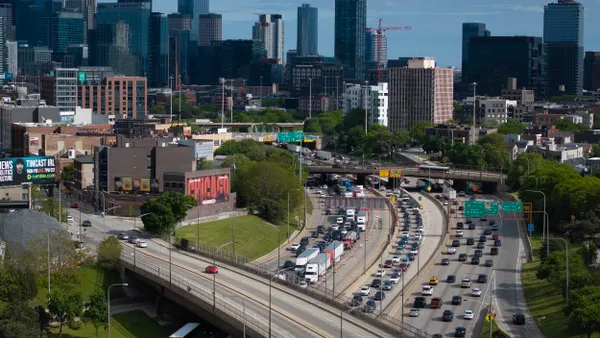Dive Brief:
- Safety concerns prompt women in New York City to spend an average of $26 to $50 more than men on transportation each month, according to a report from researchers at the New York University Rudin Center for Transportation.
- 75% of female survey respondents had experienced some form of harassment or theft on public transportation, compared with 47% of male respondents. These incidents caused women to perceive their safety was at risk and they were more likely than men to dress differently or not take public transportation late at night because of the perceived safety threats. Alternative mobility options generally are more expensive than public transit, leading to the added monthly cost.
- The report includes recommendations transit agencies can adopt to improve safety and close the price gap, including changes in leadership, equity, reporting and technological advances.
Dive Insight:
Not only did female survey respondents perceive greater safety threats, but many also perceived that reporting those threats doesn't lead to change. Those who rode public transportation most frequently were most likely to report instances of harassment or theft, however some women were in situations that led them to believe their reports weren't taken seriously.
These statistics are important for transit agencies to take note of. The results clearly show that when people don't feel safe on public transportation they will not use it, and in some cases will go well out of their way to take less convenient or more expensive mobility if it means feeling safer. Incidents of harassment might seem small but they appear to have a cumulative effect that changes perceptions and drives women away from public transportation, at least at night.
An interesting methodological shortcoming with this survey indicates the safety problem might be even worse for certain sectors of the population. Nearly 93% of the survey respondents have a college degree or higher, which is disproportionately higher than the city-reported average of 34.5% of New York's total population. The respondents also heavily skewed from wealthy, predominantly white parts of the city, such as the Upper West Side of Manhattan. These factors suggest the respondents have more resources and more money at their disposal to seek safer transportation options such as ride-hailing or taxis. But riders without that same level of wealth and education might feel forced to ride transit even when they get harassed or feel unsafe, potentially leading to a heightened level of anxiety, which over time affects people's health and quality of life.
The researchers recommend training first responders to be better at helping harassment or theft victims and hiring more female leadership at transit agencies to increase the likelihood of building in safety measures from the start. They also suggest improving technology on transit to provide better monitoring and reporting tools to aid when an incident occurs and deter the incidents.












